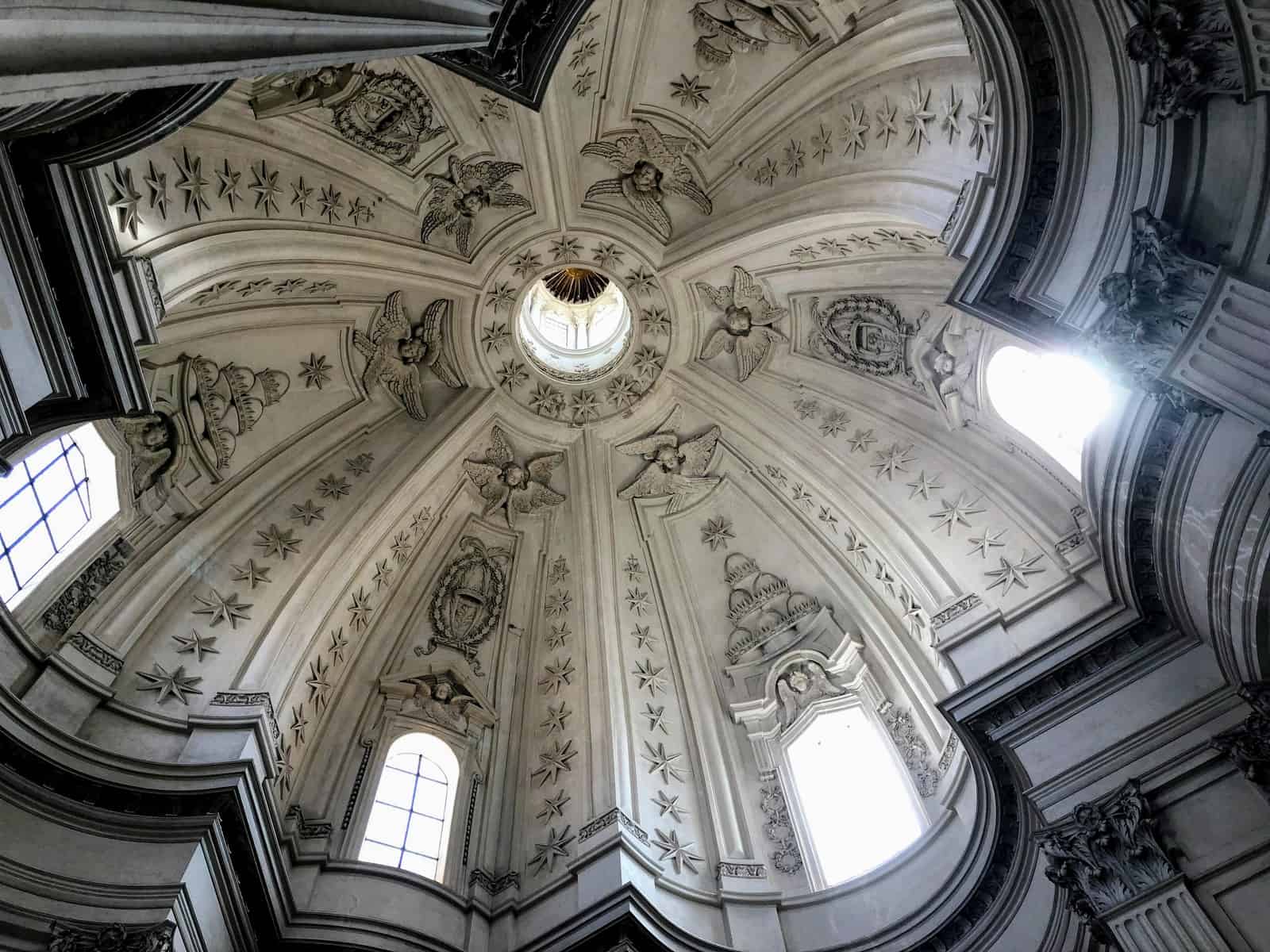Borromini’s Baroque: Rome Beyond the Gilt
It’s easy to overdose on gilt, colored marble, and cherubs when visiting Baroque buildings in Rome. The Roman church used excessive ornamentation to impress the masses, but it obscures some fascinating architecture. The good news is that Francesco Borromini’s revolutionary buildings are anything but gaudy. The bad news is that there aren’t many of them, and they are not always easy to access.
Borromini and his rival Bernini created many of Rome’s greatest Baroque structures. Unfortunately, Borromini was hampered by a difficult temperament, suffering from a melancholy which ultimately drove him to suicide. While Bernini charmed the rich and powerful, Borromini earned a reputation as troublesome. Most of his commissions, not surprisingly, were quite small. Often he was hired for a restoration or to add an addition. Sometimes he quit the job midway through, and sometimes his work was later modified.
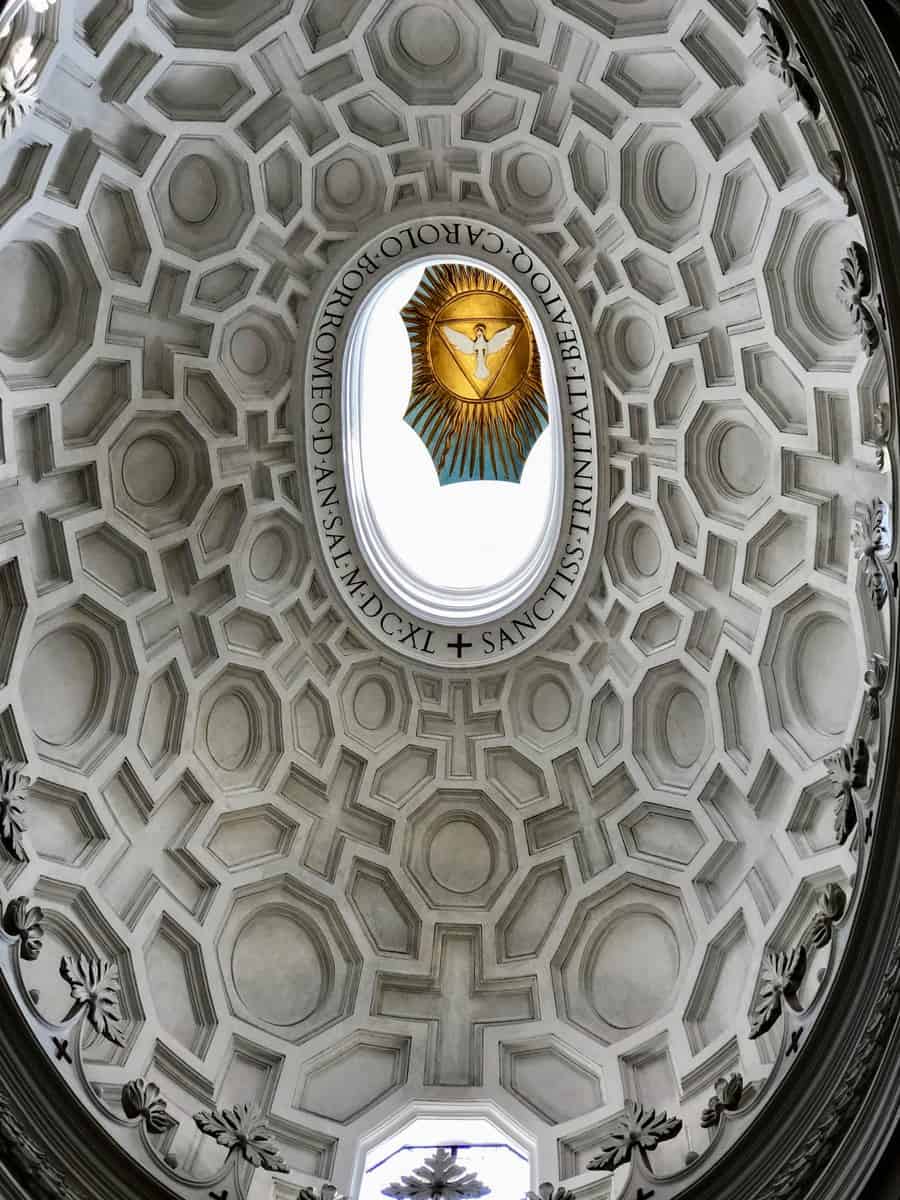
Because Borromini’s projects were so limited, tracking them down can feel like a quest. We’ve put together a guide to Borromini’s architecture, in the hopes of making it more accessible. For many, these are some of the most sublime spaces in Rome. At the very least, they stand as evidence that there’s more to the Baroque than gold and angel babies.
Contents
All sites below are marked on our Google map.
San Carlo alle Quattro Fontane (San Carlino)
Chiesa di Sant’Ivo alla Sapienza
Oratorio dei Filippini & Biblioteca Vallicelliana
Palazzo Spada: forced perspective gallery
Basilica di San Giovanni in Laterano
Palazzo di Propaganda Fide & Magi Chapel
Chiesa di Sant’Agnese in Agone
Basilica di Sant’Andrea delle Fratte
Chiesa di Santa Maria dei Sette Dolori
Borromini: an introduction
Architects geek out over Borromini. His mastery of complex geometry is rivalled only by the greatest Islamic sites. His floor plans are works of art in and of themselves.
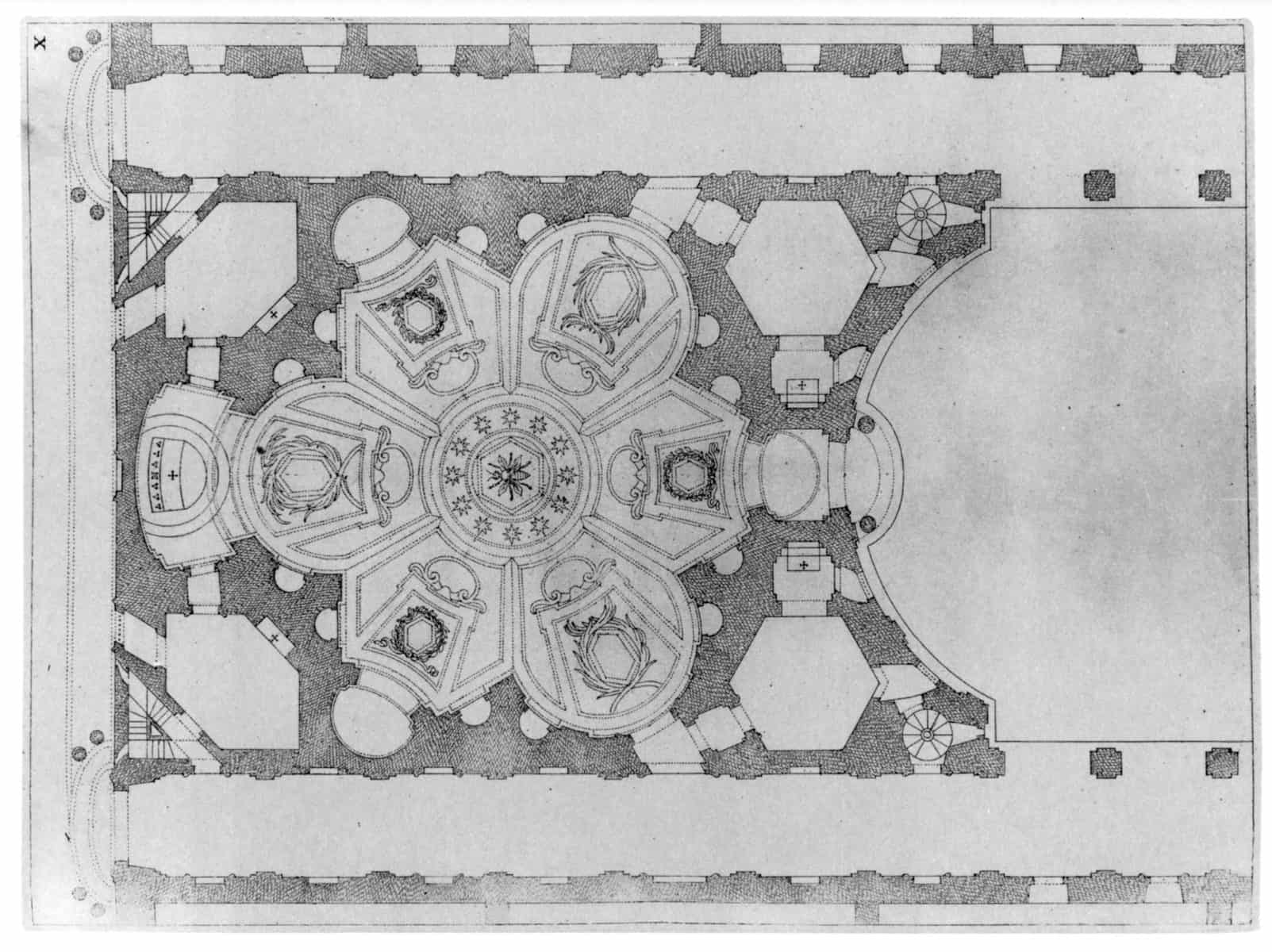
Borromini brought architecture to life by abandoning simple symmetry in favor of dynamic relationships. Instead of circles, which look the same from any angle, he used ovals. Instead of using a form just once, he layered two together. The order is still there, but it changes depending on one’s point of view. Forms narrow and widen in a pulsation, and the space seems to come alive.
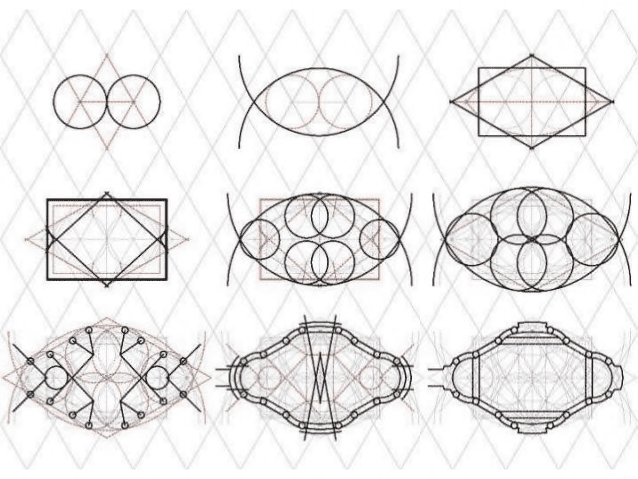
Unlike Bernini, who used light in service of a larger narrative, Borromini’s work focuses on illumination as its own source of inspiration. Like the great painters of the era, he emphasized chiaroscuro, the play of light and shadow. Consequently, his buildings are mainly white, and most of the ornamentation is sculptural. Compared to the extravagant embellishments of conventional Baroque architecture, Borromini’s buildings feel pure and fresh.
Must-See Borromini
San Carlo alle Quattro Fontane (San Carlino)
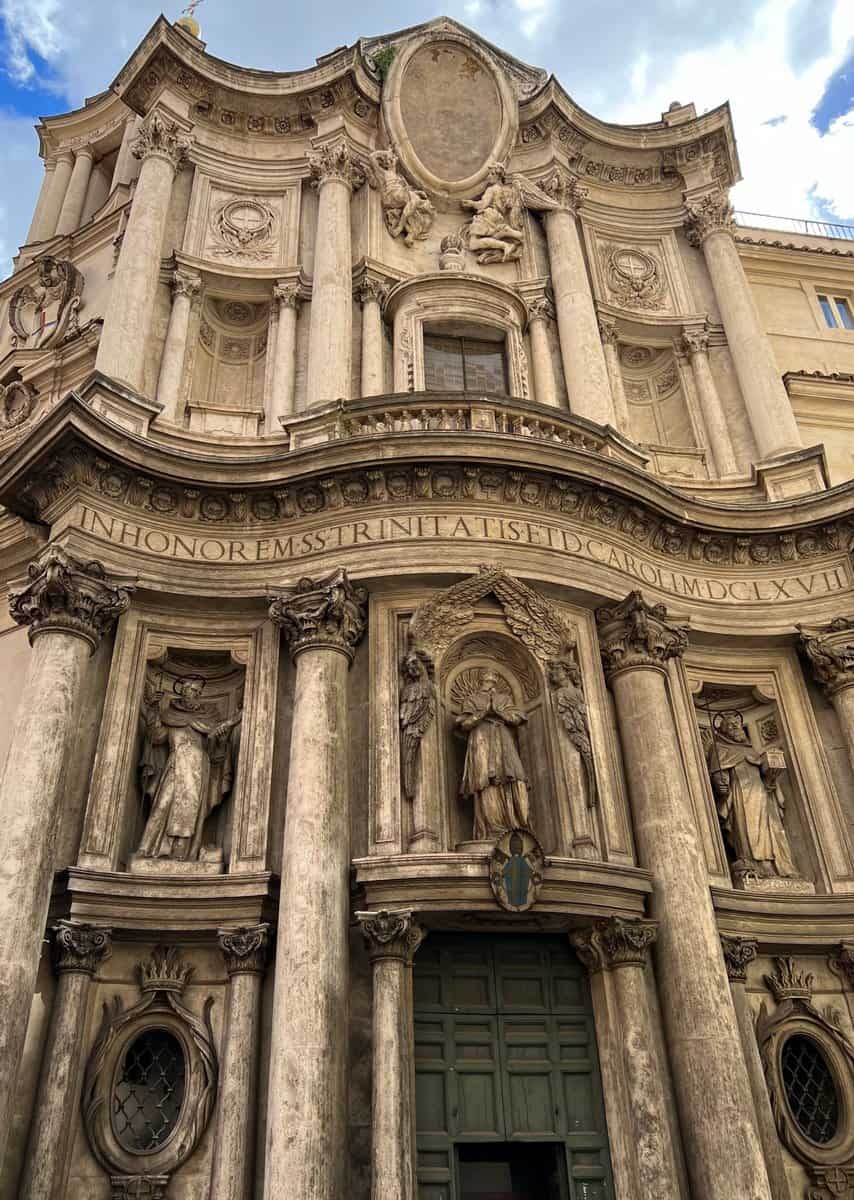
Borromini’s first independent architectural commission, this little church was already light years beyond his contemporaries’ designs. An undulating façade compensated for the plot’s tiny, awkward shape. The site is on a corner, and a conventional dome would be the obvious choice to unify the building’s two sides. Instead Borromini rather radically used a different form on each street: one side has a small bell tower, and the other has tiers of decreasing size.
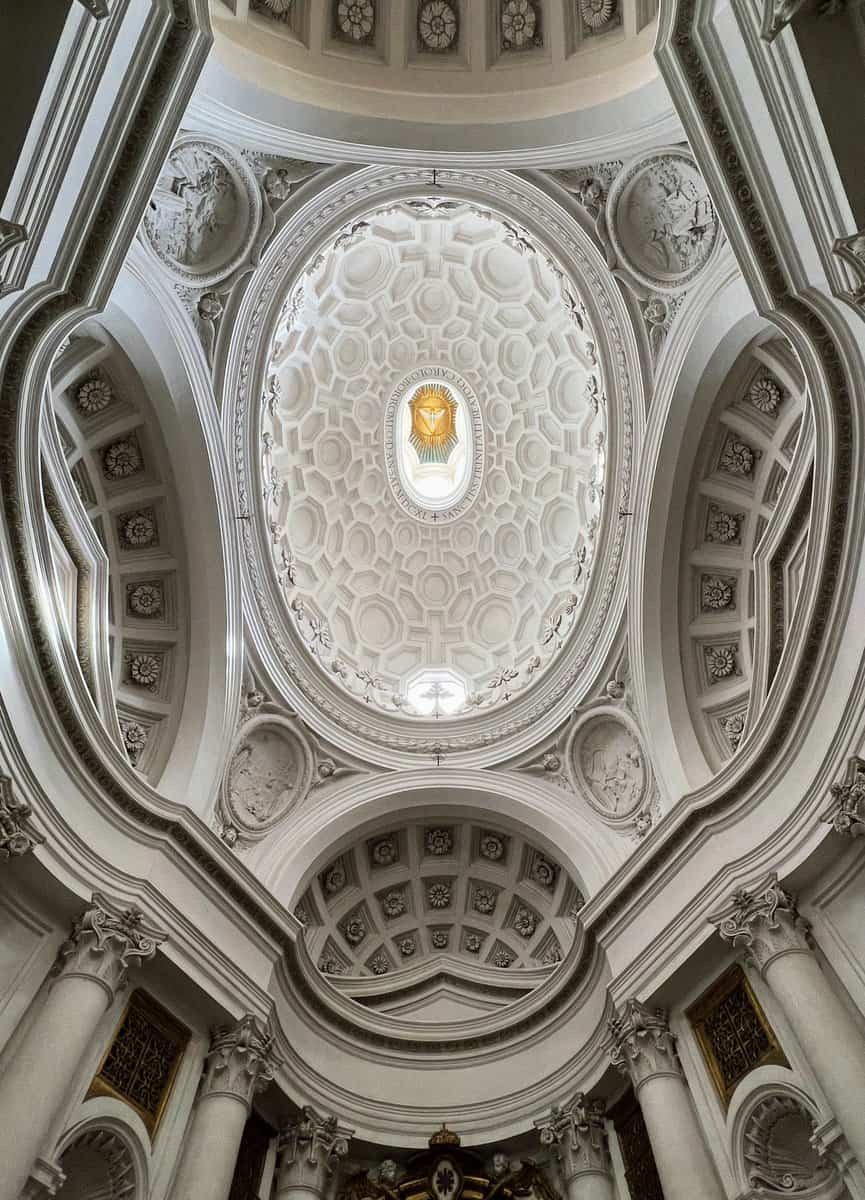
The interior is even more surprising. There turns out to be a dome after all, and it is oval. No need for ornamentation or sculpture here; the deep coffering of the dome gives plenty of drama – especially when it uses interlocking crosses, hexagons, and octagons instead of traditional squares.
Via del Quirinale 23, Monday-Saturday 10-1.
Chiesa di Sant’Ivo alla Sapienza
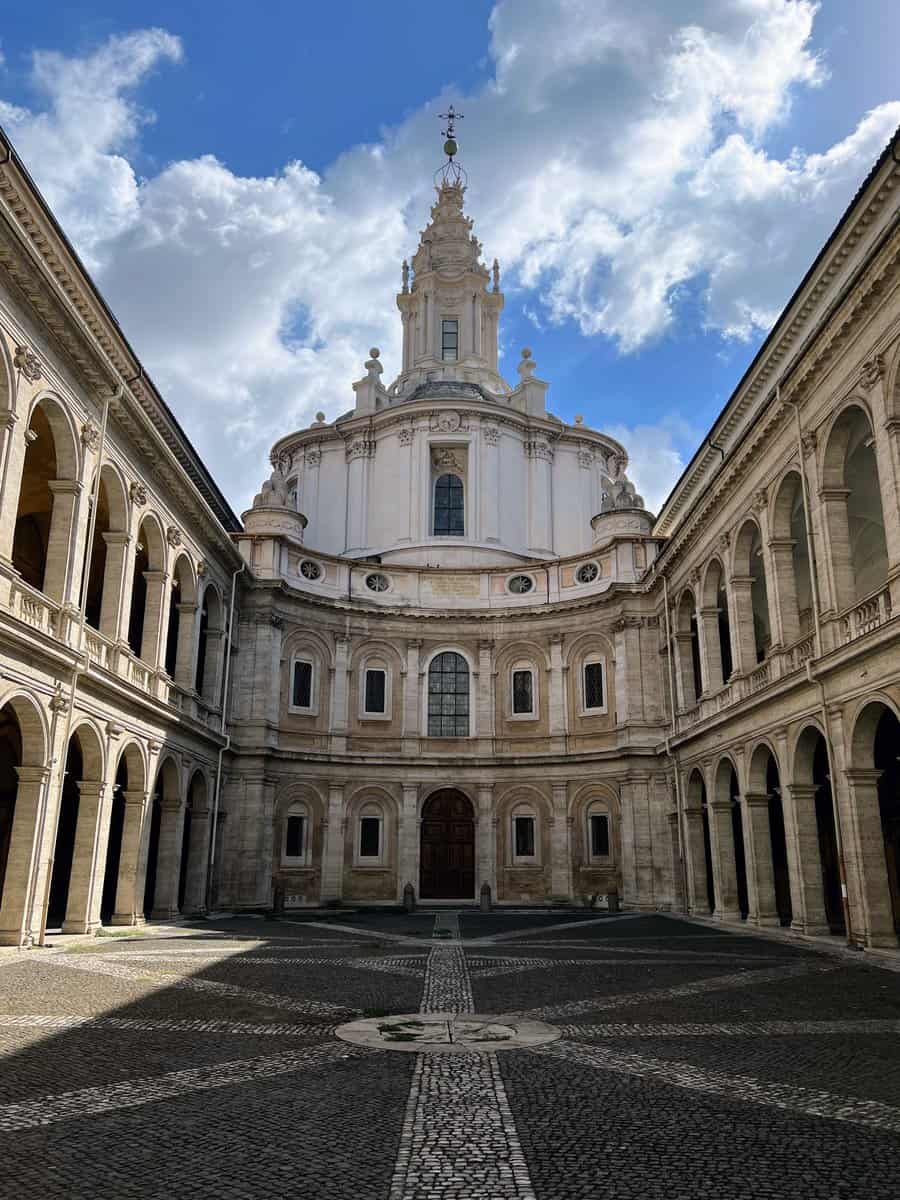
The ancient La Sapienza University of Rome occupied a complex of fairly conventional Renaissance buildings, with a tiny space at the end of the courtyard left over. Borromini was commissioned to fill it in with a church. Because his design needed to harmonize with the existing structures, the lower façade is more conventional. Only the top portion, with its wedding cake spiral instead of a dome, signals something new.
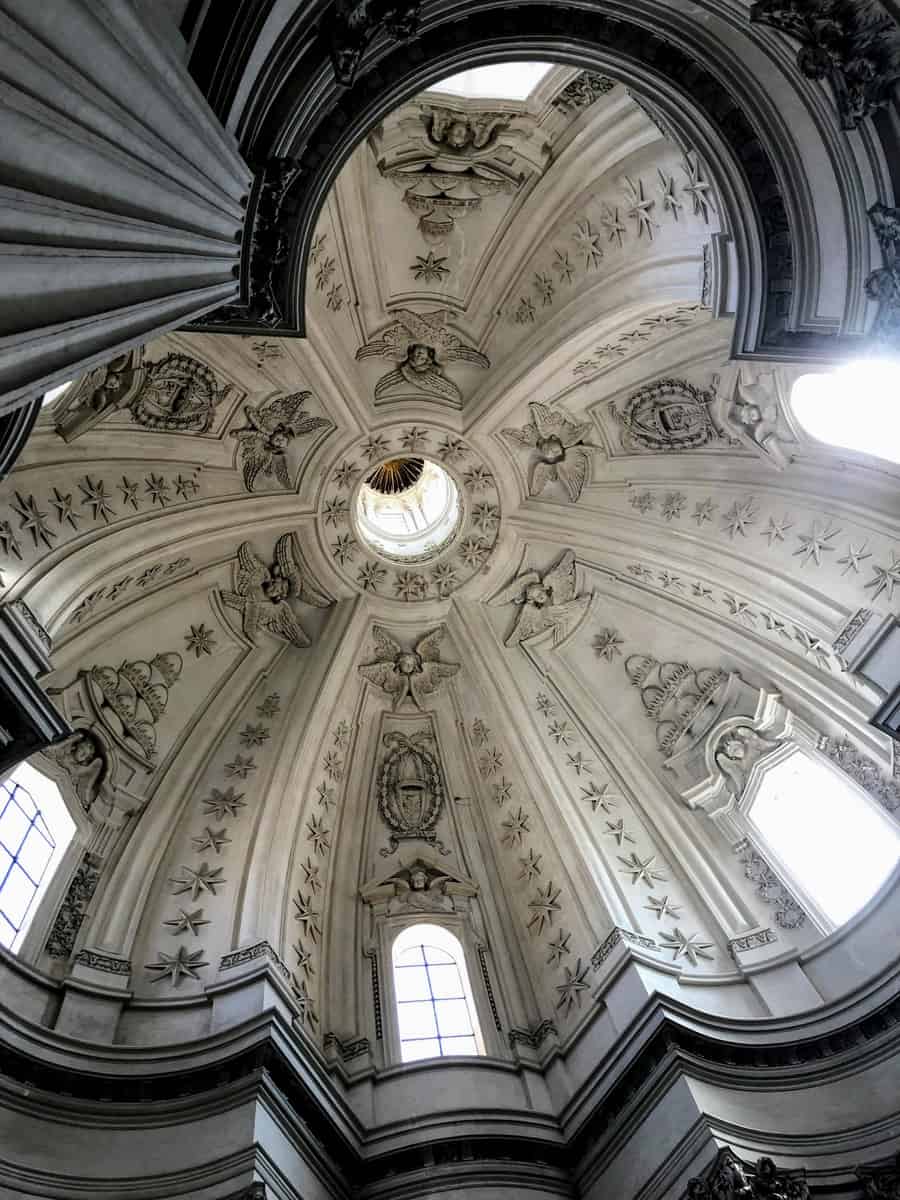
Other architects eventually copied Borromini’s exterior forms, but Sant’Ivo’s interior remains unique. The design might be based on an equilateral triangle pierced by circles, but it feels like a flower. Extra-tall walls emphasize the floor plan’s intricate shape, and it all goes crazy on top. The decorative elements represent the three popes presiding during the building’s construction: the bees of Urban VIII Barberini, the dove of Innocent X Pamphili and the stars of Alexander VII Chigi.
Corso Rinascimento 40, church interior open Sunday 9-11 with mass from 11-12, closed July through 1st week of September. The courtyard doesn’t have official opening times but usually follows weekday business hours.
Oratorio dei Filippini & Biblioteca Vallicelliana
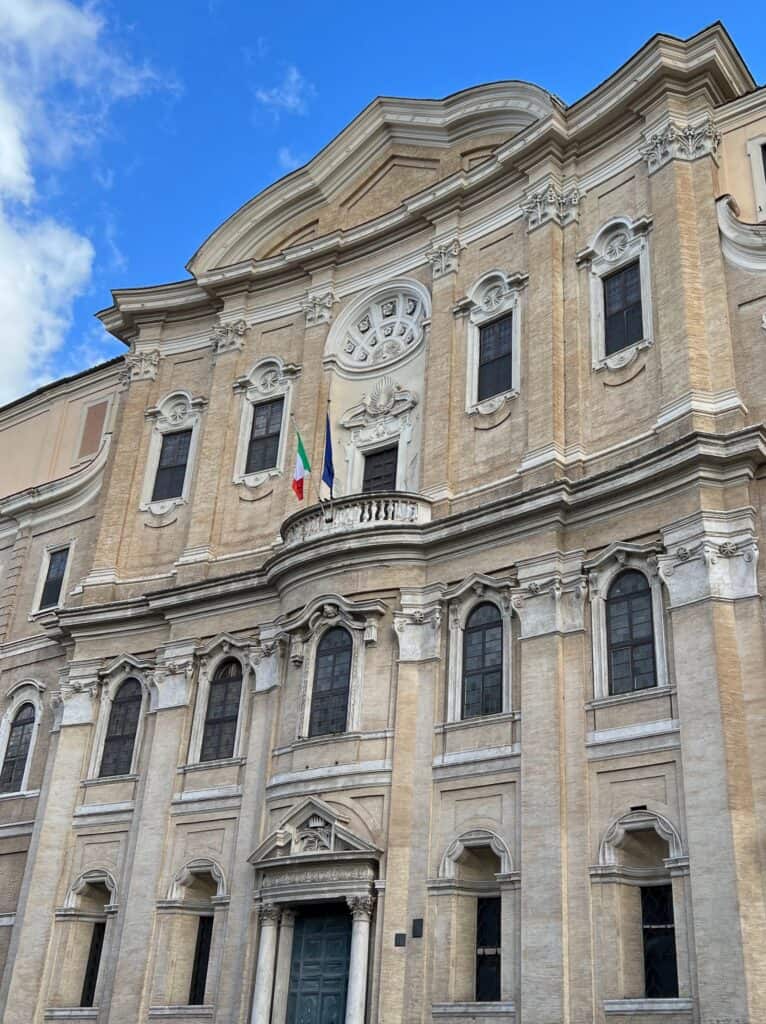
Borromini took over this project from another architect who lacked adequate engineering expertise. A near-impossible agenda called for squeezing a series of new spaces in and around several existing structures and somehow uniting everything into a single building. Furthermore, the façade could not compete with the adjacent church.
Of necessity, the façade and the clock tower had to be subtle, but the architect brought interest through a sense of movement. Like many of his façades, this one features a concave curve which Borromini claimed was inspired by the form of a man opening his arms for an embrace. (Bernini borrowed the concept with his famous colonnade at the entrance of St. Peter’s.) A convex entrance in the center makes the wall undulate, while individual elements all seem to be transitioning from one form to another. The triangular pediment becomes curved, arches over the windows turn into complex niches, and capitals stretch down from little spirals.
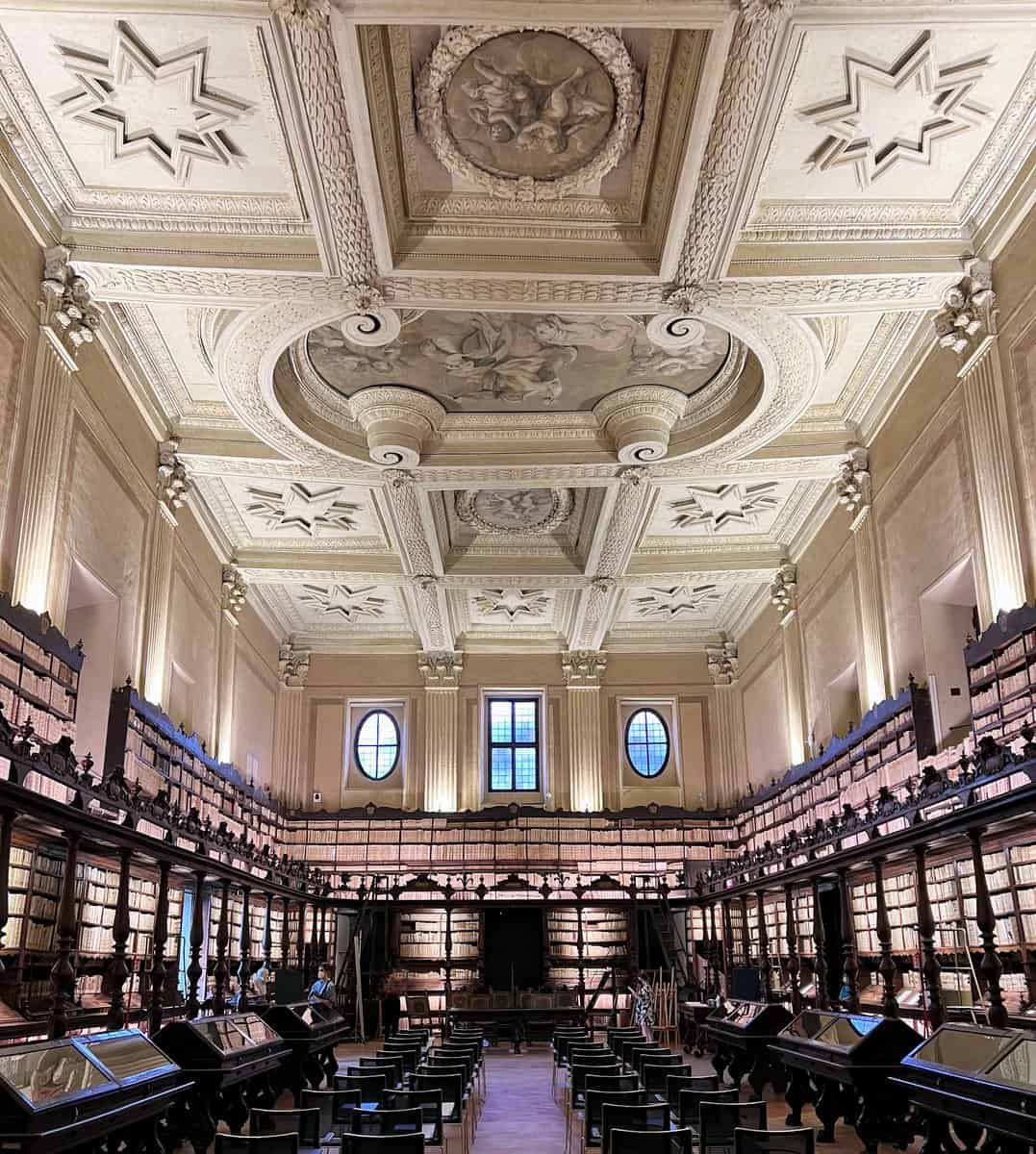
On the inside, Borromini’s work included a pair of interior cloisters, a refectory, residential spaces, and a large library, as well as the music hall itself. Not all of it remains intact or accessible, but the library known as the Biblioteca Vallicelliana is one of the most under-rated spaces in Rome. Borromini’s trademark monochrome palette embodies the philosophy of the Filippini, who wanted to stress that the books’ contents were more important than their appearance. As such, the order had its books covered in humble white parchment. The lack of color plus Borromini’s deeply sculpted ceiling emphasize the play of light associated with knowledge and divinity.
Piazza della Chiesa Nuova 18, Monday-Friday 8:15-3. Visits are free but must be requested in advance by emailing b-vall.didattica@cultura.gov.it.
More Borromini: facades, renovations, and installations
Palazzo Barberini: staircase

I call this space the vortex. There’s really no way to convey how a mere staircase can become a such a powerful place, full of energy and tension. Borromini broke all the classical rules for proportion and harmony, creating his own dynamic rhythm. Bernini’s staircase in the same building also used paired columns, but with only a fraction of the effect Borromini created.
Via delle Quattro Fontane 13, Tuesday-Sunday 10-7. Entrance includes a major painting collection: see Palazzo Barberini + Galleria Corsini website for information.
Palazzo Spada: forced perspective gallery
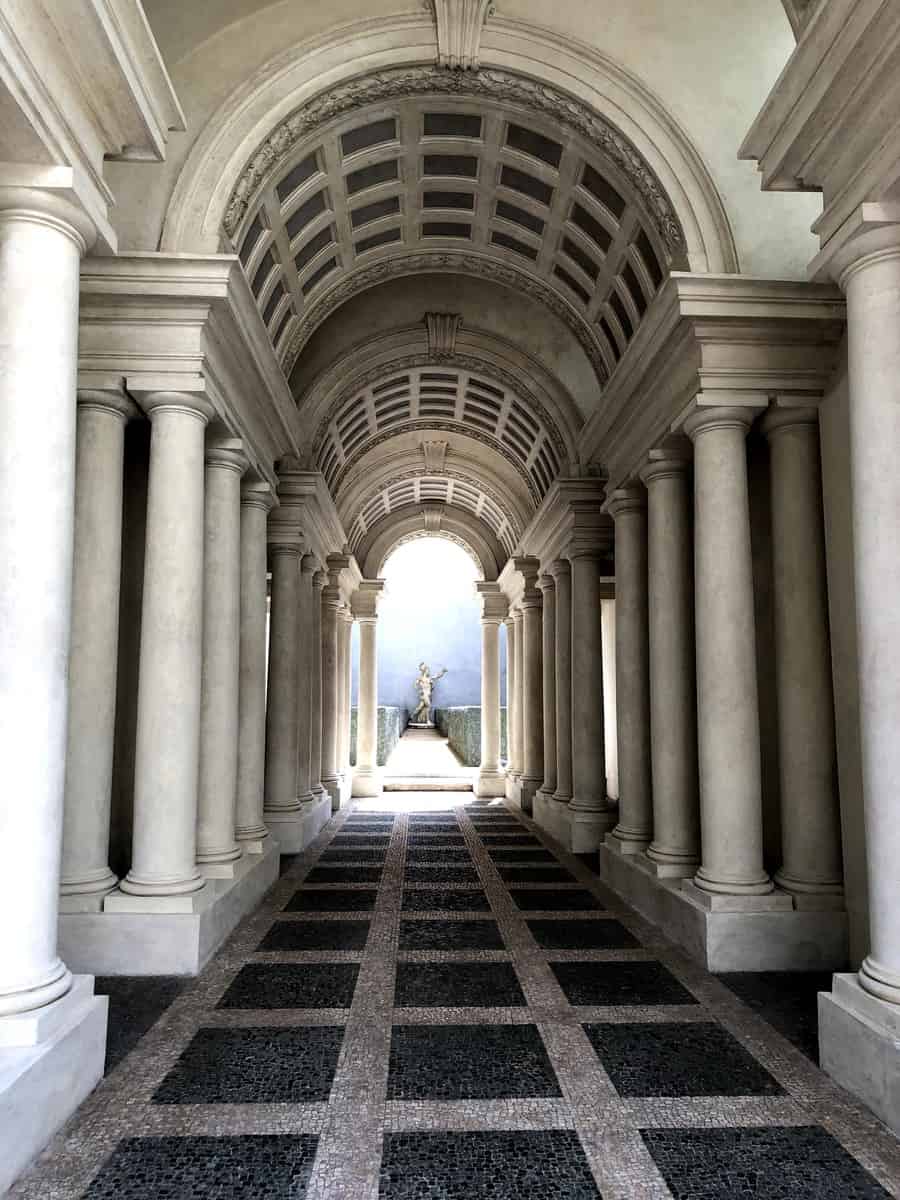
Borromini’s trompe-l’œil colonnade qualifies more as a novelty than a major work, but it’s fun anyway. By decreasing the size and placement of the columns while sloping the floor and ceiling to meet them, Borromini created a space which appears to be over four times longer than its true measurements. The statue at the end looks life-size, but actually measures less than 2 feet (60 cm) tall.
When we visited, a guide accompanied us from the main building to the courtyard with the gallery. We had an interesting discussion about how this design’s use of classical perspective could be considered religious. After all, the return to classical geometry in the Renaissance traditionally represents humanism; instead of reaching up to heaven like Gothic architecture, architects took inspiration from ancient works of man. By the Baroque period, however, you’ll hear references to “sacred geometry” which might reflect genuine belief, or could be the Counter-Reformationists’ way of justifying architecture’s celebration of geometry, or both.
Galleria Spada, Wednesday-Monday 8:30-7:30. Entrance price includes the Palazzo Spada and its painting collection.
Basilica di San Giovanni in Laterano

The pope wanted an overhaul of the existing church, but wouldn’t let Borromini alter much of the structure. The architect used pilasters (embedded columns) of epic proportions to establish a basic spatial rhythm. Between them solid and void alternate in the form of convex aediculas with sculptures and arched openings. Surprising details, such as the reliefs on the inside surfaces of the wall openings or the curving of façade’s interior side, add subtle richness.
Piazza di San Giovanni in Laterano, daily 7:30-6. (Note: to find the entrance, follow the signs posted near the palazzo on the left as you face the basilica.)
Palazzo di Propaganda Fide & Magi Chapel
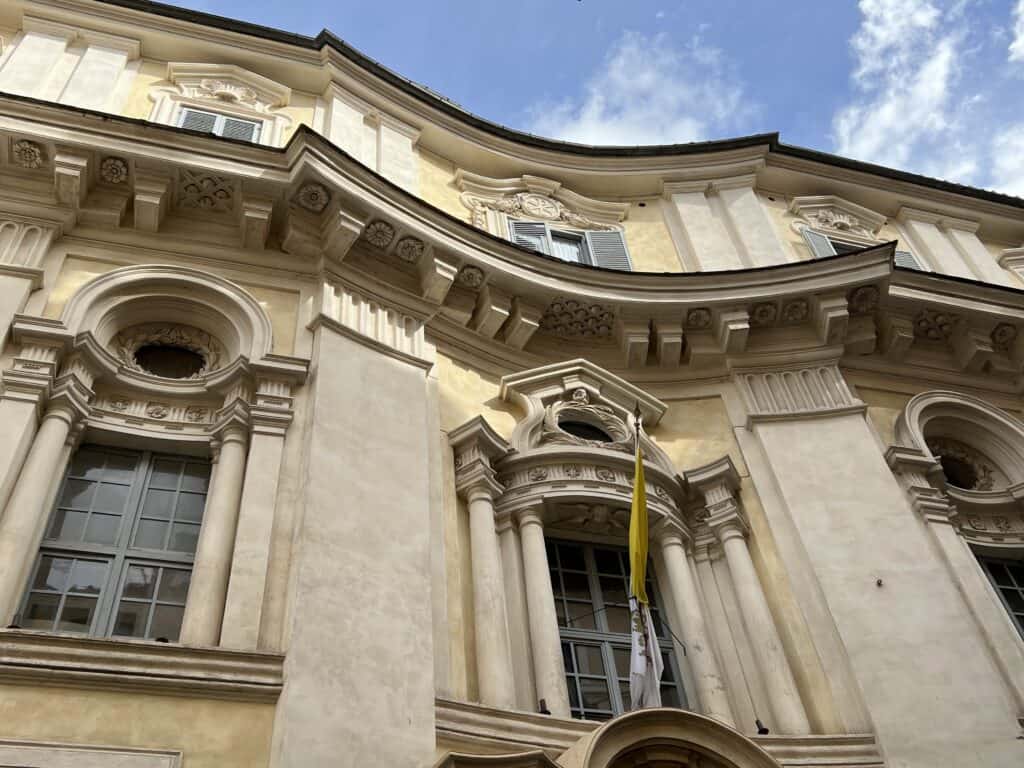
Like the Oratorio dei Filippini, this commission called on Borromini to design around existing structures, including work already begun by Bernini. The façade on the Via Propaganda showcases Borromini’s typically surprising juxtaposition of forms. When restoration work on his Re Magi, or King’s Chapel, is complete, this building will move into the “Must-See” section. Via di Propaganda 1, Magi Chapel closed for renovation.
Chiesa di Sant’Agnese in Agone
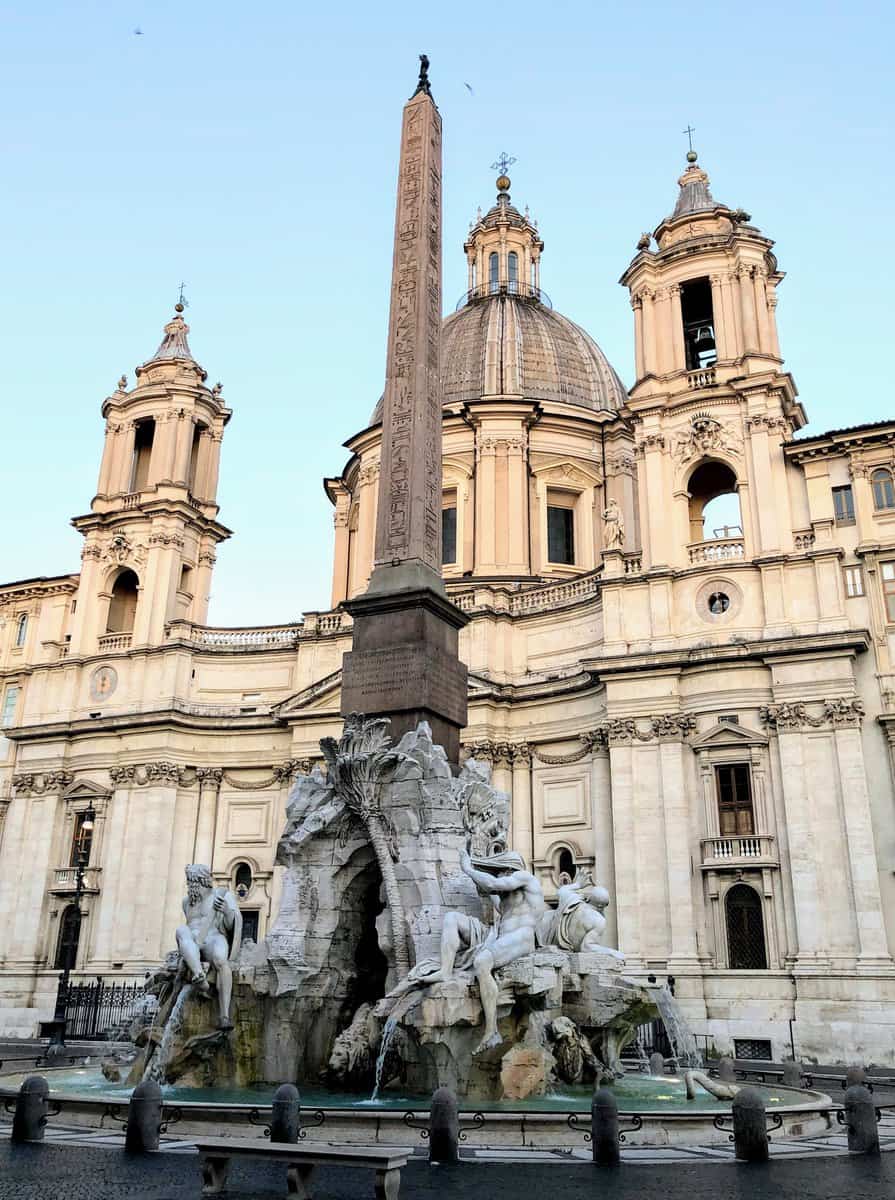
Because of its size and prominent location in the Piazza Navona, this is the Borromini building most people will see – which is unfortunate, because it’s not nearly as interesting as the ones mentioned above. In fact, Borromini actually took the project over from another architect, only to resign four years later when the new pope showed little interest in it. His modifications include the concave façade and twin bell towers, as well as some of the interior finishes. Bernini’s famous Four Rivers fountain stands in front of the church; tour guides often claim that he posed the statues to look horrified by his rival Borromini’s work. In fact, Bernini completed the fountain before Borromini was hired. Piazza Navona, Tuesday-Sunday 9-1 and 3-7 (Saturday and Sunday until 8).
Basilica di Sant’Andrea delle Fratte
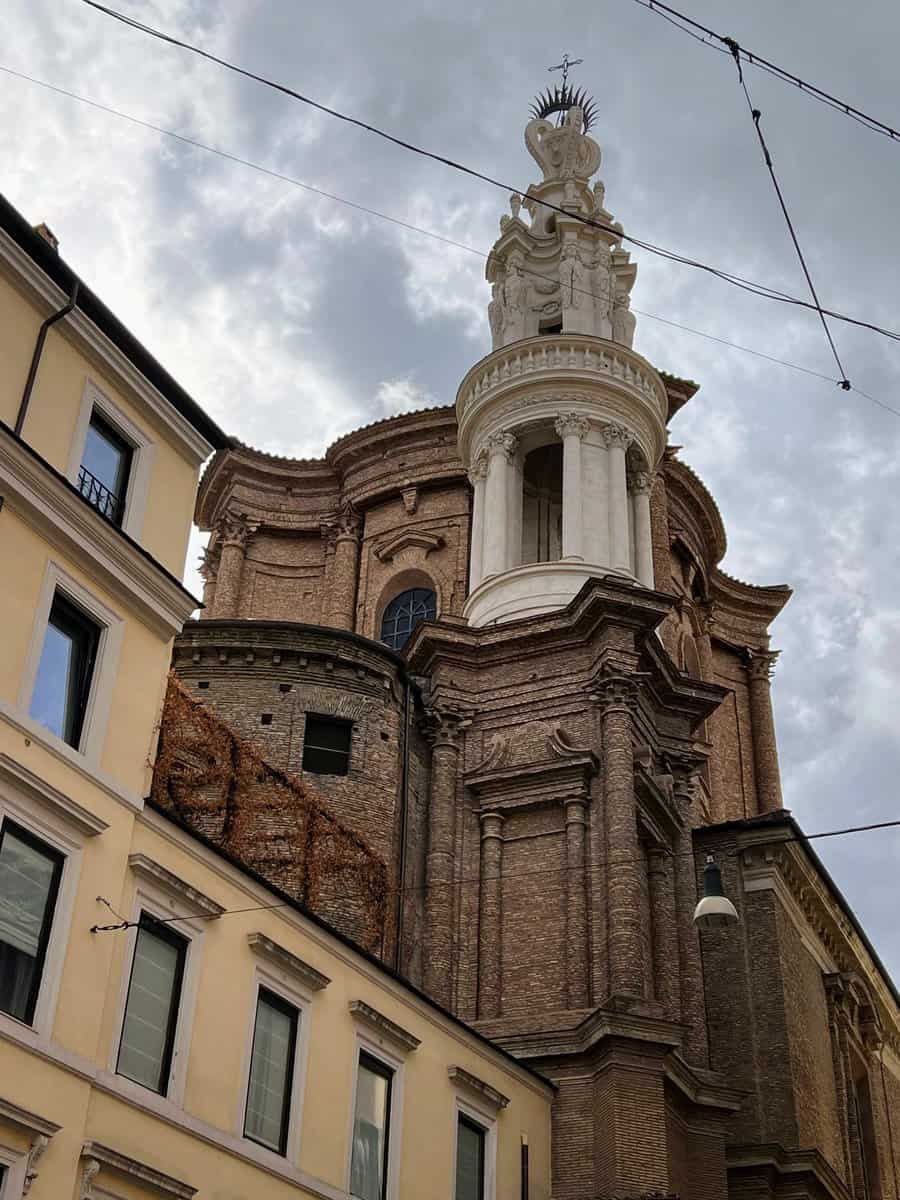
Borromini’s design to complete this building originally included an oval dome, which was rejected in favor of a circular one. His work consists mainly of the apse, the drum supporting the dome, and the square bell tower housing two of Bernini’s angels. Via Sant’Andrea delle Fratte 1, daily 7:30-1 and 4-7 (Sunday until 8).
Palazzo Falconieri
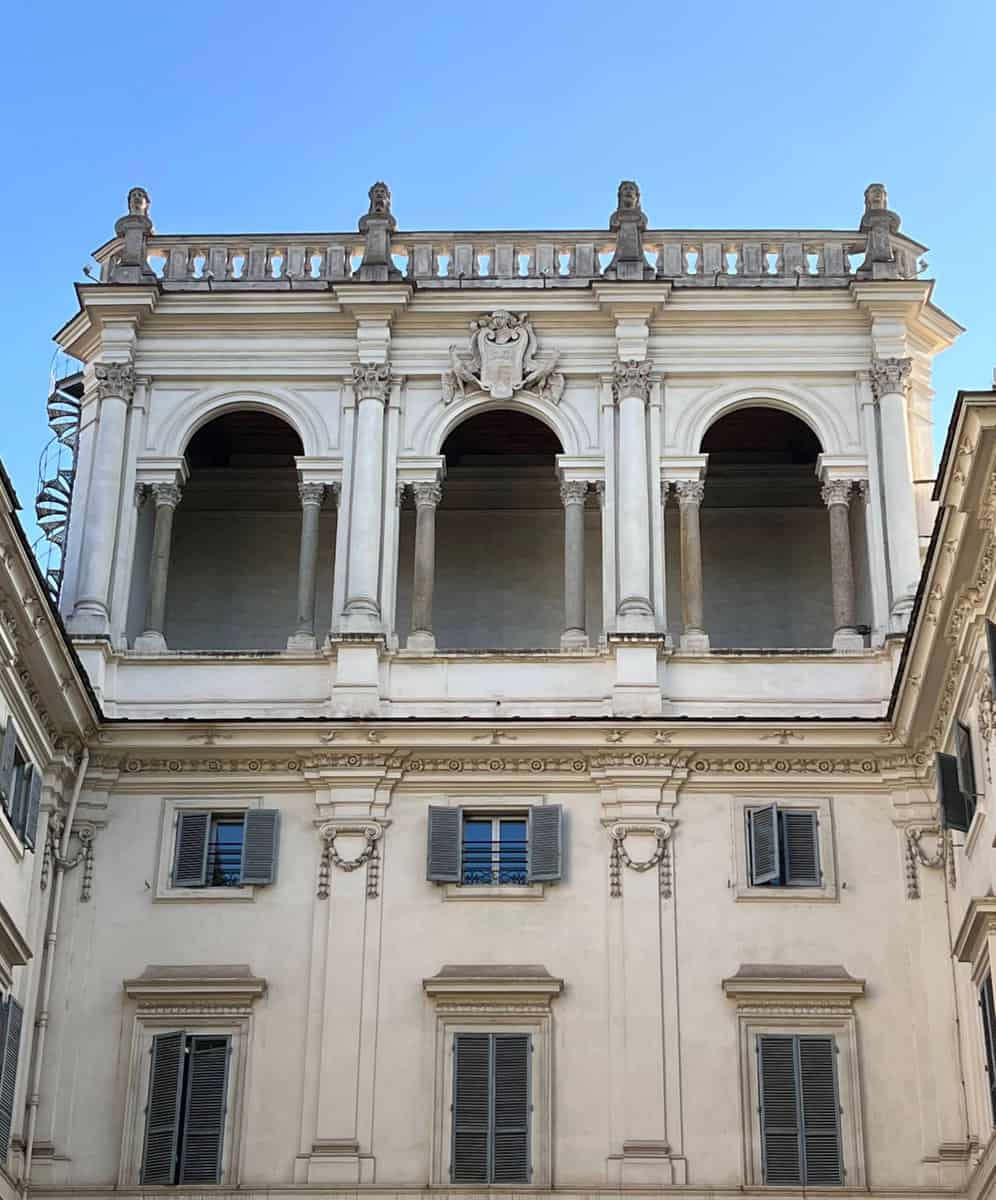
Borromini renovated two adjacent buildings and added a new wing to create an “L” shape. His surviving exterior work consists of the rather conservative Via Guilia façade and the triple-arch loggia on the rear overlooking the Tiber. Interior features such as a staircase and stucco work are unfortunately closed to the public, as the building now houses the Hungarian embassy. Via Giulia 1.
Chiesa di Santa Maria dei Sette Dolori

Another of Borromini’s unfinished projects, only the raw brick façade suggests his vision. Most of his work on the interior was destroyed by renovations; some of the building was converted into a hotel while the rest continues to house an order of nuns. Via Garibaldi 27.
other projects
Palazzo Carpegna
Borromini’s renovation included an internal portico and courtyard with an entry portal. Piccolo Scavolino 77, Monday-Saturday 9-6.
Palazzo Giustinani
Various renovations of Fontana’s design included Borromini’s doorway and balcony above (visible from the Dogana Vecchia), as well as an interior courtyard. Now the official residence of the President of the Italian Senate. Via della Dogana Vecchia 29.
Cappella di San Giovanni in oleo
In his restoration of this small chapel, Borromini added a new conical roof. Via dei Porta Latina 77.
Chiesa di Santa Lucia in Selci
Borromini completed Carlo Fontana’s restoration of this early Christian church. Via in Selci 82, daily 7:30-12 & 4-6.
Chiesa di San Giovanni dei Fiorentini
We found it hard to distinguish Borromini’s touch in the architecture here. He finished the high altar begun by Pietro da Cortona as well as designing a pair of funeral monuments for the Falconieri family on the sides. His crypt for the family, normally accessed via a staircase behind the main altar, is closed for renovations.
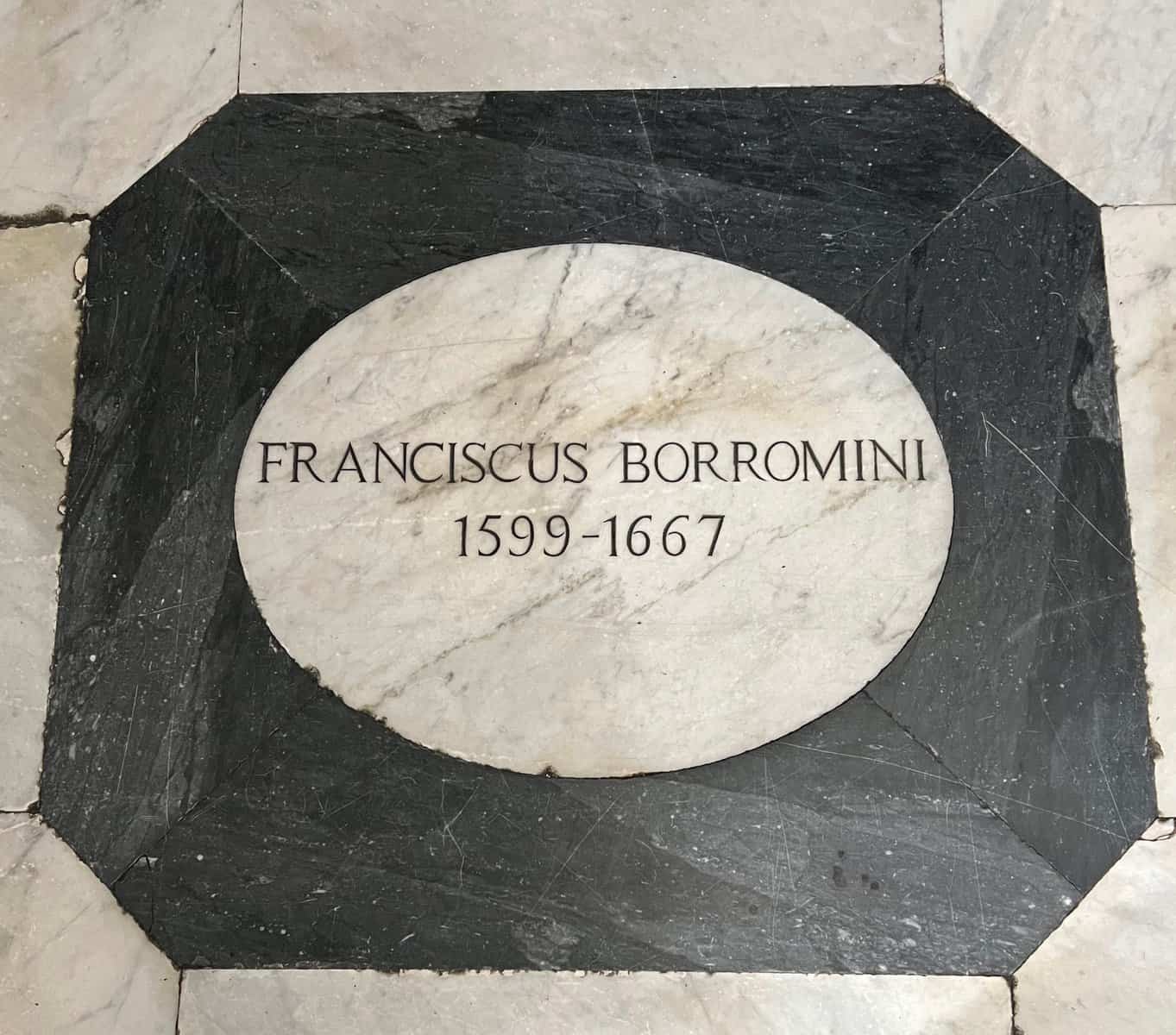
The church also holds Borromini’s remains. (The Catholic Church has never officially banned funeral rites for suicides.) As requested, the architect was placed near his mentor Carlo Moderna with just his name inscribed. Piazza dell’Oro, 8:30-12 & 5-7.
Further Reading
Guarino Guarini’s Baroque buildings in Turin combine Borromini’s innovations with advanced geometry to produce startling effects.
For more on Rome, see our guides to the city’s historic bridges and ancient churches and basilicas.

